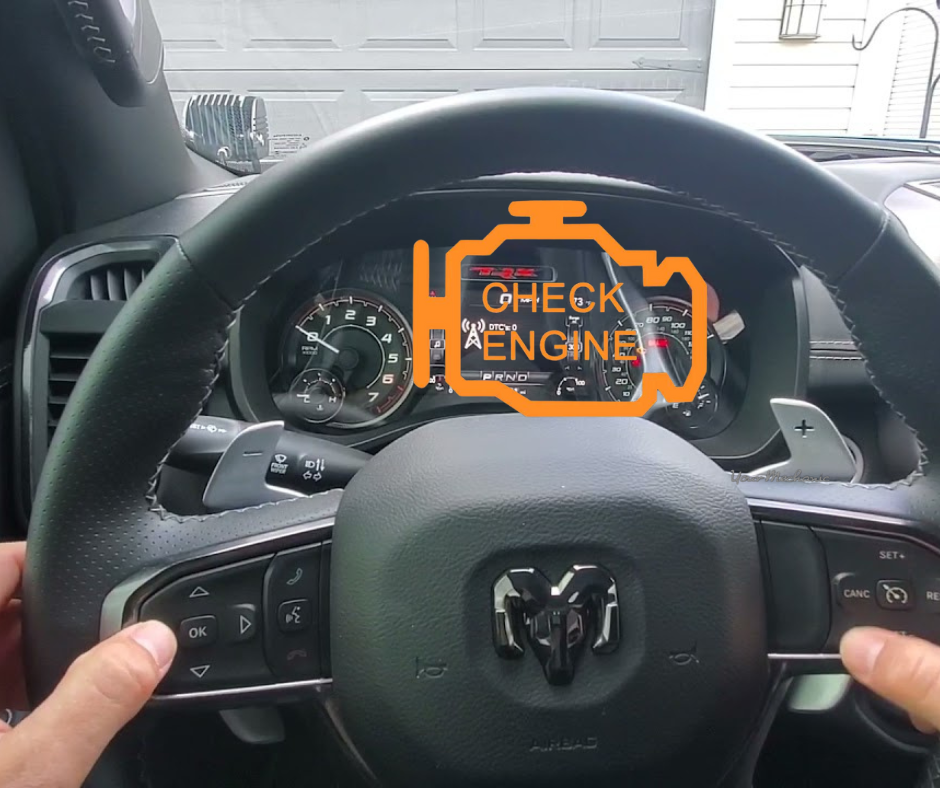Dive deep into the realm of Diagnostic Trouble Codes (DTCs) with our comprehensive exploration designed for Ram TRX enthusiasts. The Ram TRX, boasting its formidable V8 HEMI engine and unparalleled off-road prowess, stands as a pinnacle of automotive engineering. To maintain this mechanical beast at its zenith, an understanding of its communicative language through DTCs is paramount. Herein, we unveil everything you need to comprehend about DTCs, their intricate structure, and their pivotal role in preserving the vitality and performance of your Ram TRX.
Decoding Diagnostic Trouble Codes (DTCs)
DTCs are the vehicle's method of signaling issues detected by its onboard diagnostics (OBD) system. Upon recognizing a fault, the OBD system records a specific code and, if the issue is significant, may activate the "Check Engine" light. These codes serve as crucial diagnostic tools, directing technicians and owners towards pinpointing and rectifying problems.
Focusing on P0300 and P0303
Let's examine two prevalent codes that you might encounter:
- P0300 - Random/Multiple Cylinder Misfire Detected: This code signifies that misfires have been detected across several engine cylinders, potentially leading to diminished performance, increased emissions, and engine harm.
- P0303 - Cylinder 3 Misfire Detected: In contrast to P0300, P0303 specifically identifies a misfire in cylinder 3, enabling more focused diagnostics and repairs, essential for sustaining the Ram TRX's exceptional performance.
The Role of CANBUS in DTC Communication
The Controller Area Network Bus (CANBUS) system plays a critical role in contemporary vehicles, including the Ram TRX. It ensures smooth communication among the vehicle's microcontrollers, sensors, and systems. CANBUS is instrumental in the efficient transmission of DTCs to diagnostic tools, facilitating rapid identification and resolution of issues.
Deciphering DTCs: An In-depth Look
DTCs adhere to a structured format, offering detailed insights into identified issues:
- First Character: Highlights the system associated with the fault (e.g., "P" for Powertrain).
- Second Character: Differentiates between generic ("0") and manufacturer-specific ("1") codes.
- Third Character: Points to the subsystem involved, such as "3" for ignition system or misfire issues.
- Fourth and Fifth Characters: Pinpoint the exact fault, zeroing in on the problem area.
This systematic approach aids in precisely locating the specific issue, streamlining diagnostics and repair processes.
DTC Structure Chart
For clarity, below is a chart depicting the general structure of DTCs:
| Character | Meaning | Examples |
|---|---|---|
| First | System related to the fault | P = Powertrain<br>B = Body<br>C = Chassis<br>U = Network Communication |
| Second | Code Type | 0 = Generic (SAE Standard)<br>1 = Manufacturer Specific |
| Third | Subsystem | 1 to 8 (Specific subsystems) |
| Fourth & Fifth | Specific Fault | 01 to 99 (Specific fault number) |
This chart serves as a foundational guide for understanding the array of DTCs that may arise, enabling a deeper comprehension of vehicle diagnostics.
Ensuring Peak Performance of Your Ram TRX
For Ram TRX devotees, mastery of DTCs and CANBUS communication extends beyond mere troubleshooting—it's essential for ensuring optimal performance. Proactive diagnostics can prevent potential issues, and a thorough grasp of DTCs empowers effective dialogues with technicians, guaranteeing that your TRX continues to embody automotive supremacy.
By promptly addressing DTCs like P0300 and P0303, and possessing a robust understanding of their implications, Ram TRX owners can safeguard their vehicle's health and performance. This guide not only equips you with the expertise to confront DTCs confidently but also ensures that your Ram TRX remains capable of delivering the exhilarating performance for which it is celebrated.
Harness the power of knowledge and allow your Ram TRX to manifest its full potential, ensuring that every journey is as electrifying as the first.

